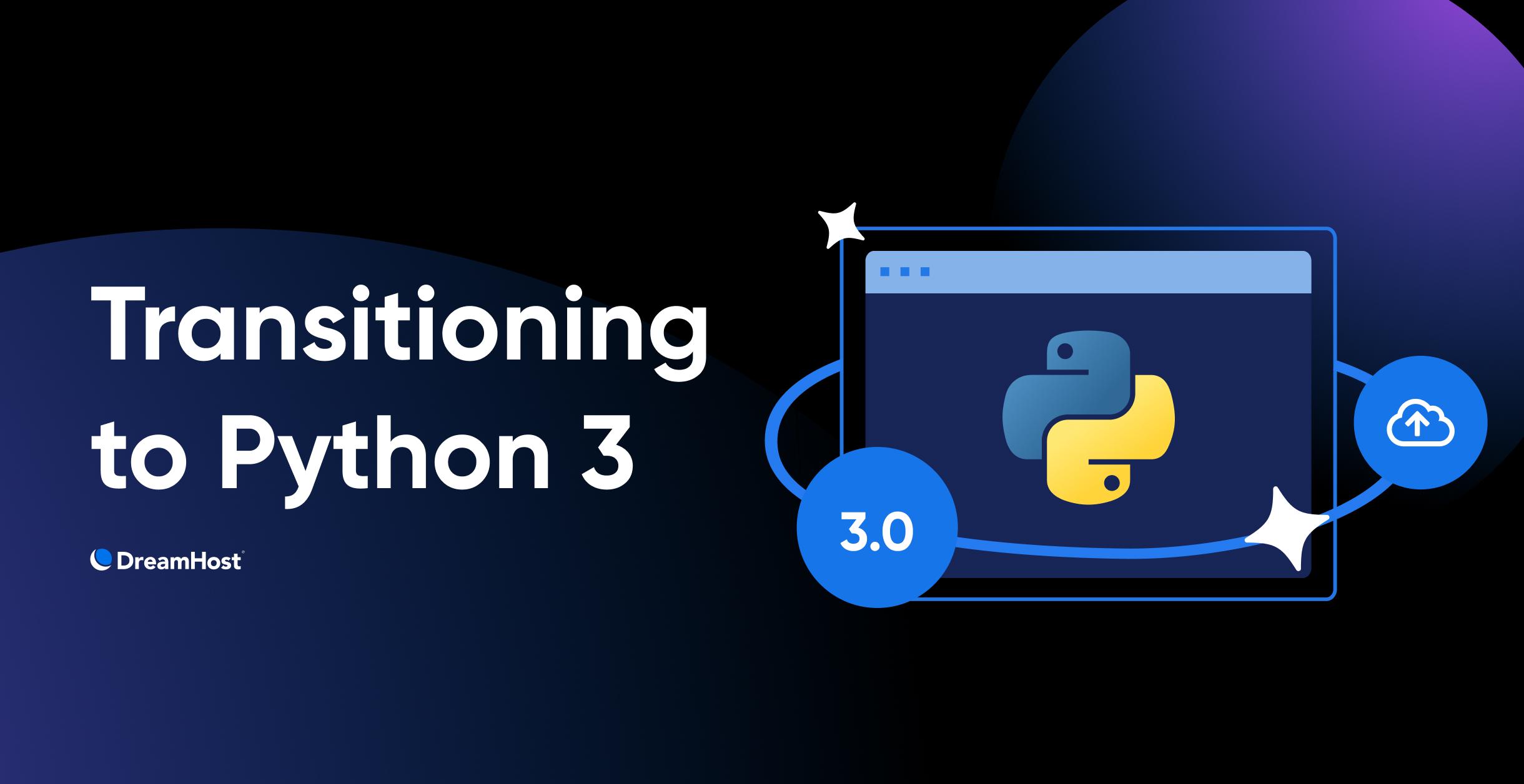Transitioning To Python 3 – DreamHost Blog

Python 2.7 was officially declared end-of-life (EOL) by the Python Software Foundation at the beginning of 2020. This means that all Python 2.x versions will no longer receive support, security updates, or bug fixes from the official developers.
The Python Software Foundation has granted Python 2 a longer support period than most Python versions. However, the rapidly advancing world of technology necessitates a shift. With the release of Ubuntu Noble and subsequent versions, Python 2.7 will no longer be integrated into the newer operating systems. Additionally, all Python 2.x versions will no longer be available. We hope this underscores the urgency of transitioning to Python 3.
This might seem like a daunting transition, especially if you’ve been coding in Python 2.7 for a while. But don’t worry — we’re here to help soften the blow and guide you through this change.
Why Upgrade From Python 2?
Python 3 is the future, and it’s here to stay. It introduces many improvements and new features that make coding in Python more efficient and enjoyable.
Security And Compatibility
The primary concern with continuing to use Python 2.7 – and other older versions – is security. Without ongoing updates and patches, any vulnerabilities discovered post-EOL pose a significant risk to applications and systems still running this version. Moreover, newer operating systems, like Ubuntu Noble, will not support Python 2.7, creating additional challenges in terms of compatibility and future-proofing your infrastructure.
Enhanced Features And Improved Performance
Python 3 offers significant improvements, including better memory management, more robust type checking, and modern features like f-strings, async functions, and more, all of which contribute to more efficient code.
Preparing For The Transition
This whole process may seem daunting, but with the right resources and planning, this can be a smooth process. Here are some steps to guide you through the migration:
Transitioning your Python 2.x code to Python 3 might seem like a Herculean task, but the Python community has got you covered. The official Python documentation provides a detailed guide on how to port your Python 2 code into Python 3. You can find this guide here: https://docs.python.org/3/howto/pyporting.html#
While saying goodbye to Python 2.x may be bittersweet for many, the transition to Python 3 is not just necessary; it’s beneficial. With improved functionality, enhanced security, and continued support, Python 3 is well-prepared to champion the next generation of development.
If you’ve got any questions about this upgrade, please be sure to check out the official Python Documentation linked above or reach out to our Technical Support team. We’re standing by, ready to help!
Remember, at DreamHost, our goal is to empower you to shape the web as you see fit. We’re here to support you through this transition and help you continue to create amazing things on the web.

Site Update
Get Your Site Up To Date
Technology is constantly moving forward and keeping up can be a chore. We’ll upgrade your outdated, insecure software to get you back on track.
Learn More



